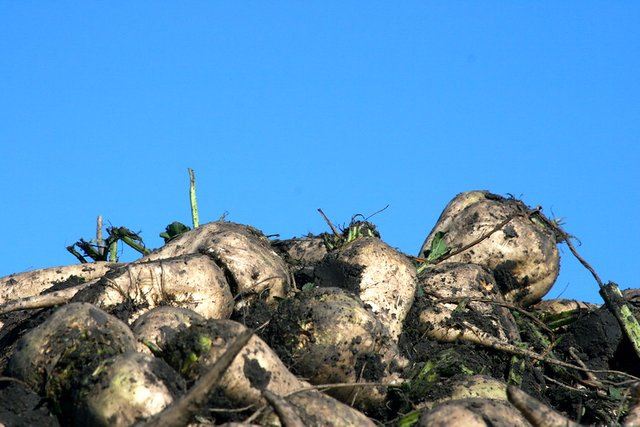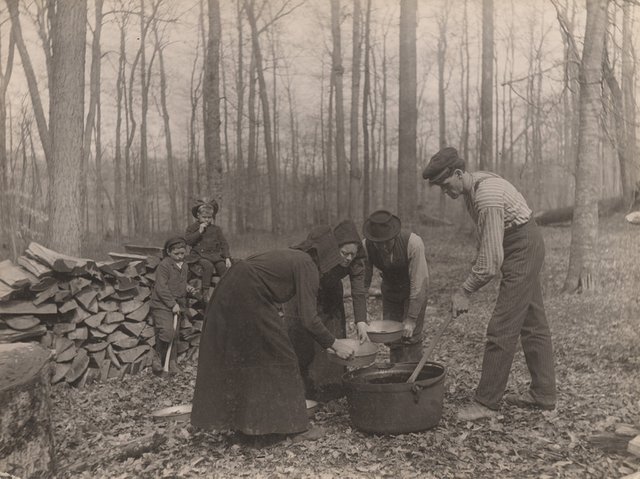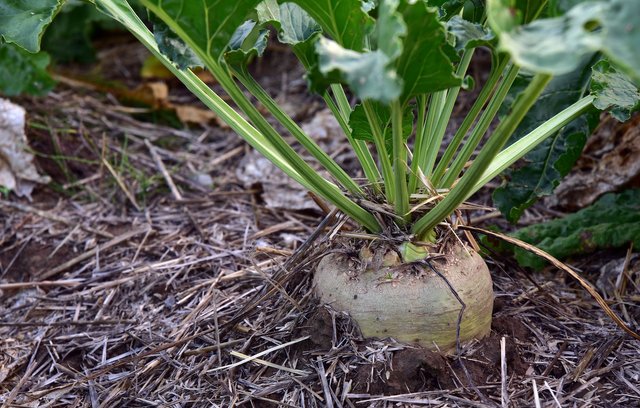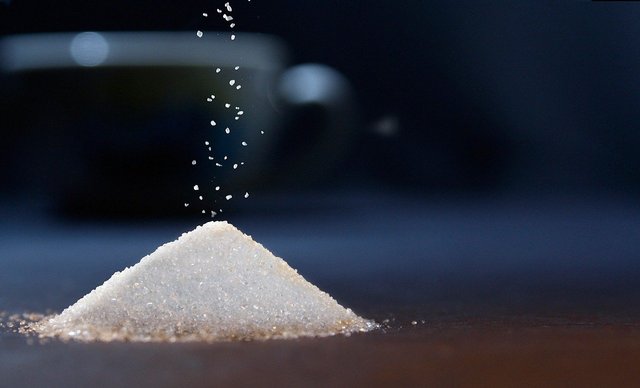Permaculture - homemade sugar in non-tropical climate (lesson 29)
Homemade sugar in a moderate or cold climate
I am in the process of preparing a lesson about herbal spirals, but as it is a very time-consuming activity, I need a few extra days to finish. Today I will share a shorter "lesson" with unusual curiosity.
Most of us believe that even if we are striving to be as self-sufficient as possible, sugar should be included along with salt and a few other foods on the list of things that cannot be prepared at home (at least in temperate climates, where it is not possible to obtain it from sugar cane, and the store sugar comes from beetroots).
Of course, you can try to replace it fully with honey, you can simply buy a large supply in a supermarket (after all, 100% self-sufficiency is impossible to achieve), but you can also produce an excellent, healthier version of that product with a little effort (well... if you can call this product healthy at all). Homemade sugar from beetroots will be also much cheaper than the store version.
To produce sugar of the quality we know from the stores, no special equipment or hardly available ingredients are needed. The simplicity of the process is evidenced by the fact that homemade sweetener was popular in Poland among housewives at the beginning of the 20th century. Precisely based on one of the recipes from that time I made this description:
First of all, we have to buy sugar beets from the store or get it from our garden. This is the most difficult step. Sugar beets are hard to find in stores, so we will probably have to focus on our vegetables. This requires more work but also gives us more control over the quality of the product.
To obtain 10 kg of sugar, approximately 90-100 kg of sugar beet is needed.
Cut the leaves and thin ends of the beetroots on the other side. If we have animals on the farm, we can use all the leaves, pulp, and other beet by-products as excellent feed. After cutting both ends, put the vegetables in a breezy place until they are dry.
Then move on to cleaning and peeling beets. Some of the soil will fall off after the drying process, remove the rest with a hard brush, then peel veggies one by one (cut out all the holes and grooves), thoroughly rinse them twice in water and leave them to dry again on straw, boards or wooden shelves. If the peeling and cleaning process is not carried out thoroughly, our homemade sugar will turn yellow.
The next stage is rubbing the beets into the finest pulp possible. For this purpose, you can use a meat grinder, all graters, and fruit grinders. Rub from the top, onto a linen cloth over a larger vessel. Later in this canvas, thoroughly knead the grated beets over the dish. To the juices collected in the vessel after the pulp has been crushed, add purified chalk (also known as calcium carbonate - you can buy it at a pharmacy) in the amount of 125 grams for every 90-100 kg of beets. Leave it all for at least 12 hours for any sediment to settle to the bottom.
After this time, carefully strain the whole thing again through the flannel, gradually - by ladle. Heat the prepared juice on a slow fire until it evaporates, often stirring it with a new wooden spoon or spatula.
If the liquid is not mixed or the fire is too high, the sugar/sugar syrup will burn and then turn yellow from caramelization.
You can also steam - put the pot with juice in a larger pot with water. Then the fire may be higher than in the first case.
Stop when the syrup starts to resemble the consistency of honey (liquid sugar) or then reduce the heat to the minimum and heat it very carefully until you get sugar. Remember that after cooling down, the cream/sugar will thicken.
Sugar syrup should be stored in clay, wooden, or stone dishes, and sugar in blocks wrapped in the white paper, in a dry place.
Inspired by the newspaper "Dobra Gospodyni", No. 52, December 30, 1904
All my lessons are shared totally for free with a CC-0 license (which means you can copy my text and share it wherever you want to, without the need to mark me as an author). I hope it will bring you joy.
Previous lessons can be read here:
Fertilizers
2 - types of manure and when to use it
3 - Compost. Basics
4 - advanced composting
6 - Green manure
7 - Phytosanitary plants
8 - Mineral fertilizers
--------------------------------------------------
Soil and minerals
10 - Boron, Molybdenum, Copper, Magnesium
11 - Zinc, Calcium, Iron and other elements
12 -soil components: sand and clay
14 -soil components: calcium, microorganisms, minerals
15 -soil components: water and air
--------------------------------------------------
Space
17 - Sectors in Permaculture
18 - Zones & sectors, practical use
19 - Perfect size of your garden
20 - What to choose lawn or meadow?
22 - Water reservoirs in the garden
23 - Rock Garden
24 - Patchwalks
--------------------------------------------------
Basics of traditional permaculture
25 - Three ecological principles from the Gaia's Garden School
26 - Basic tips for permaculture gardeners
27 - The Keyhole bed
28 - Raised beds/Lazy beds
Thank you for reading,
@papi.mati




Congratulations, your nice post has been upvoted by the steem.skillshare curation trail!
If you wish to join as well our trail and support our community, other users, and earn the curation reward, please check out this post:
steem.skillshare curation trail post